Globetrotters have always faced the problem of adjusting their watches when clocks go forward by an hour on the last Saturday of March. The reason is of course, that only 70 countries in the world do it, so if you are someone who travels across time zones as if they were stopovers in a cruise, you are likely to have turned up for a video call at the wrong time more than once.
Based on synchronising the railway system, the UK introduced standard time (GMT) in 1884, with 24 zones based on the Greenwich Meridian. Slowly but steadily, all countries adopted it. The horological industry quickly started to make pieces that could show the time in different places, first as pocket watches and for the wrist, by the 1930s.
However, the change to Dailight Saving Time (DST) kept being a big headache. First used in Canada in 1908, the intention was to have one more hour of daylight to work, go to the pub or simply, save in lighting expenses. Germany was the first country to use it in Europe in 1916, with many more following suit soon after.
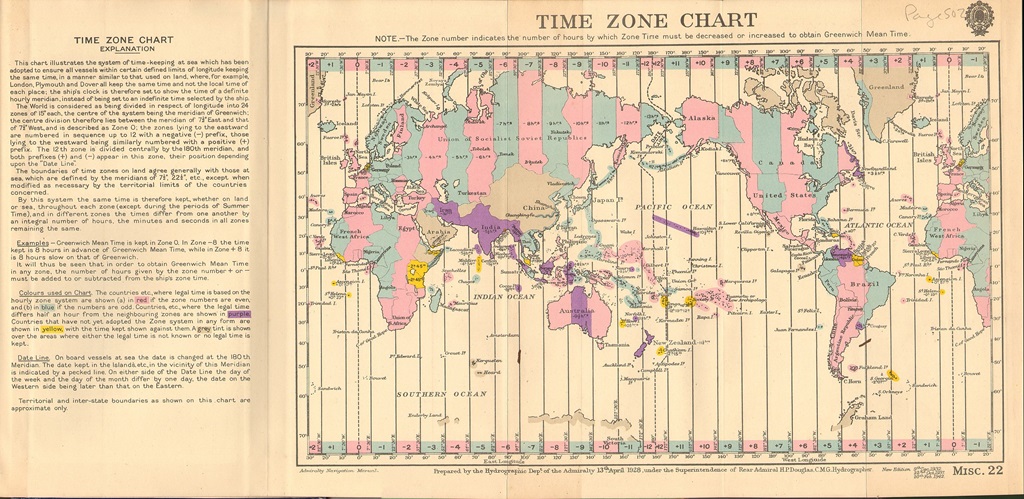
Time Zone Chart of the World. Originally published in 1928, New Edition from 1942. Reproduced in Admiralty Navigation Manual Vol 1. Source: United Kingdom Hydrographic Office.
The issue is that 125 countries either never adopted DST or ditched it at some point… or do it at a different time than others. For example, the US clocks go forward three weeks before Europe’s while China, Brazil and the UAE, don’t change at all. In consequence, no world timer can keep pace with such arbitrary changes.
Pascal Raffy, owner of Bovet 1822, came up with a brilliant – and technically uber complex – solution; one that has taken five years of research and development to become a reality. Based on an ingenious roller system, the new Bovet Récital 28 Prowess 1 can be adjusted to any one of the 24 times zones in Coordinated Universal Time (UTC, which replaced GMT in 1972), American Summer Time (AST), Europe and America Summer Time (EAS) and finally, European Winter Time (EWT).
“With the Récital 28 Prowess 1, we are solving the terrestrial time problem with a world timer that can be adjusted for all the variations in timekeeping around the world.”
– Pascal Raffy

Furthermore, the Prowess 1 also features an expanded flying tourbillon, a perpetual calendar, and 10 days power reserve from a single barrel (Mr Raffy told me that is actually 13.2 days, but who is counting?).

The Bovet Récital 28 Prowess 1 features a 46.3mm Dimier Writing Desk case, 17,85mm thick, in 18kt red gold/platinum/polished grade 5 titanium.
The Prowess 1 is not only a technical triumph but a spectacular-looking tri-dimensional watch too. Presented on a Dimier 46.3mm slope case, despite the complexity of its expression, the dial is highly legible and easy to understand. Numbers and letters are coated with Super-LumiNova. The main time disk with the 24 zones is below centre so the flying tourbillon can be positioned at 12 o’clock (the widest part of the case) at an angle enough to justify its existence. The inner and outer ring are made of aventurine, the rollers in black PVD. Each of them has four different positions adjusted just by a push of the crown to whichever time is the right one at a given point in any of the 24 time zones (it took six months to decide which cities would represent each).
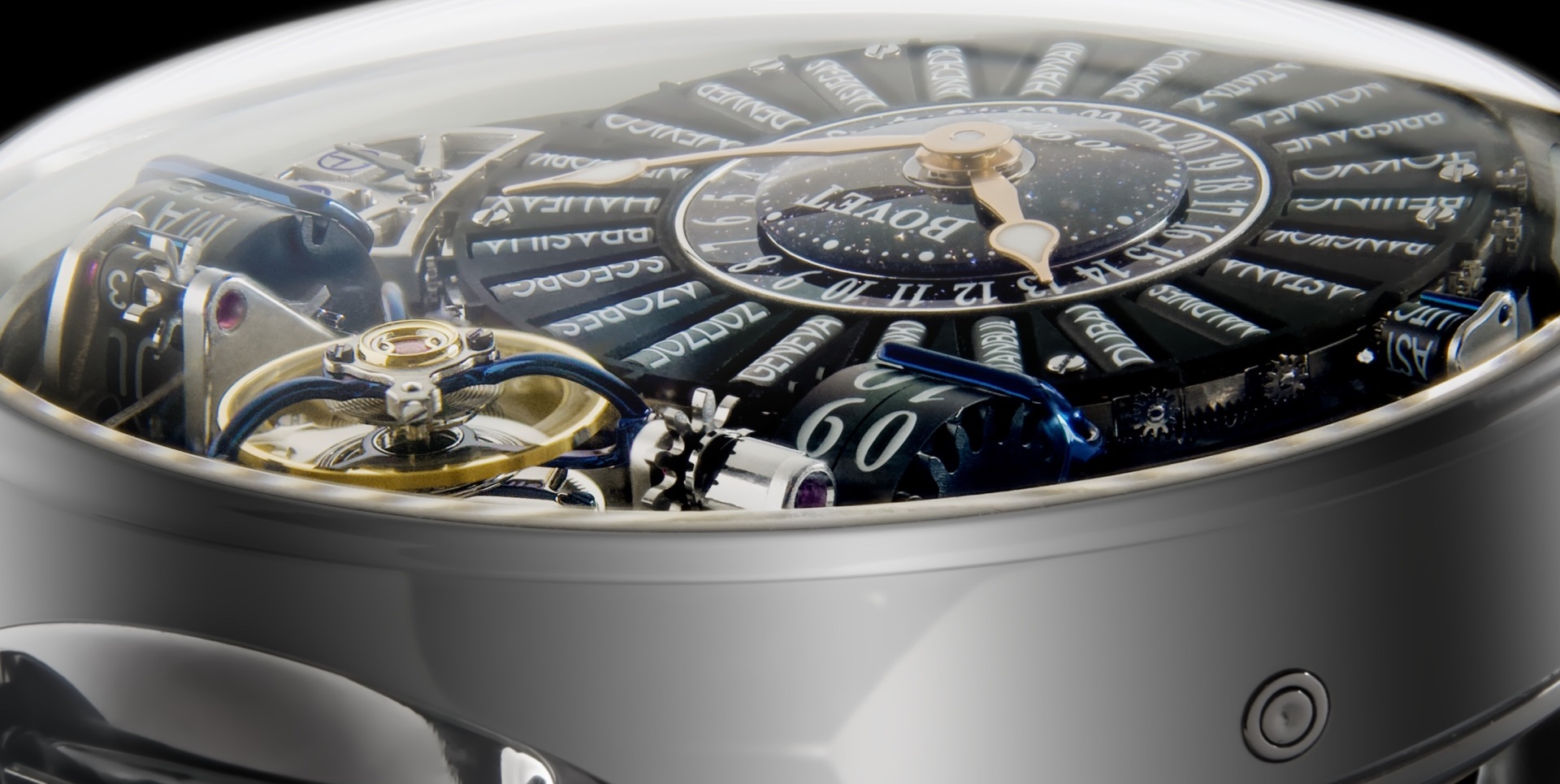
Detail of the flying tourbillon at 12 o’clock, flanked by the perpetual calendar, with the universal time at six.
The date roller for the perpetual calendar is based on an ingenious design by Leonardo da Vinci which allows it to be freed from the gearing once it gets into position in its aperture, which minimises the chances of damaging the movement. With this system, when it gets to the last day and month, they simply roll back – like in a slot machine. The detail of the mechanism can be observed through the caseback.
The new hand-wound movement is proprietary to Bovet (calibre R28-70-00X), featuring 744 components. At its base, we find the maison’s patented double-sided flying tourbillon, with some particularities. The escapement is completely on one side of the fixation point, while the cage carrying the balance wheel and the in-house balance spring are on the other side, fully exposed for the world to admire.

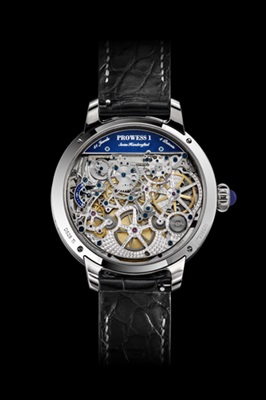
All components of the movement are hand-finished, the bridges hand-engraved and the plate decorated with perlage and Côtes de Genève.
And admire you should. It is not just the mechanical accomplishment of the Prowess 1 that is exceptional but also the way is finished. Under the lupe, we find hand-engraved bridges and a plate decorated with tiny overlapping circles (perlage) and Côtes de Genève striped finishing.
There is still more. I take my hat off to the craftsmen who did the bevelling of the main structures of the movement. They used what is known as angle rentrant technique. That means that the two edges meet on the inside at a right angle and the intersection should show a single line at the meeting point. The sharper the point, the more difficult this kind of corner is, and at this scale, there is no machine capable of doing it, only expert and patient human hands. “There are 40 perfect chamfers in this watch,” Mr Raffy says proudly, “and it takes a week to make them all.”
The sheer difficulty and time required to create a Bovet Récital 28 Prowess 1 constitute a natural limit to how many can be produced. At the moment, Mr Raffy has committed to eight per year. The watch comes in 18kt red gold, 950 platinum, and polished grade 5 titanium. The black alligator strap features platinum stiches and an 18kt red gold/white gold folding clasp.
Learn more about the Bovet Récital Prowess 1, HERE.
Words: Julia Pasarón









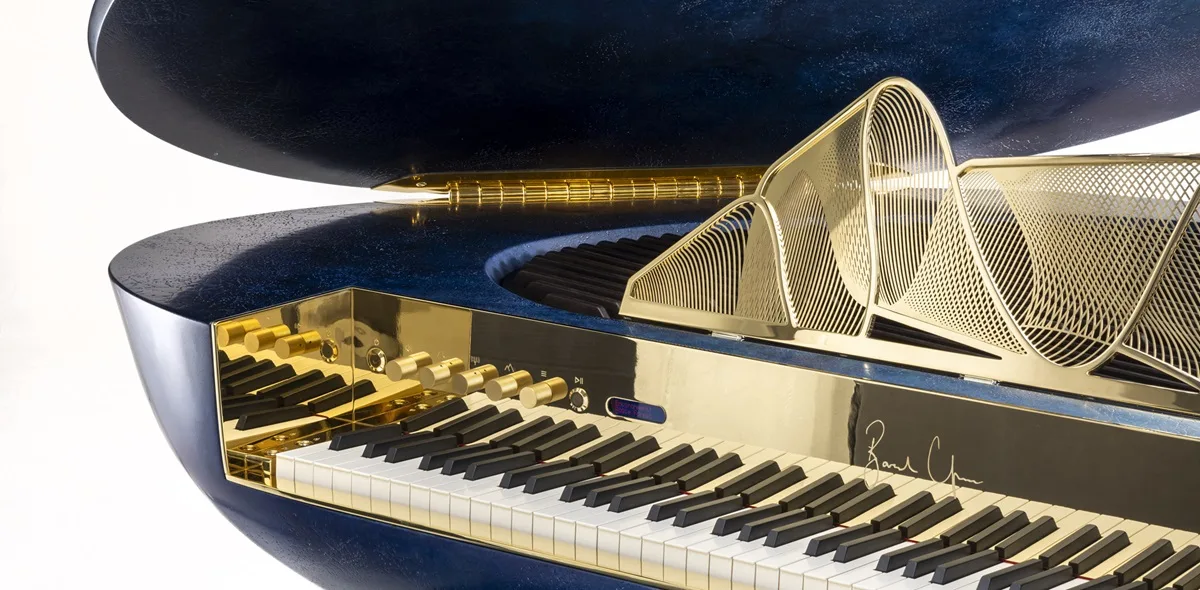
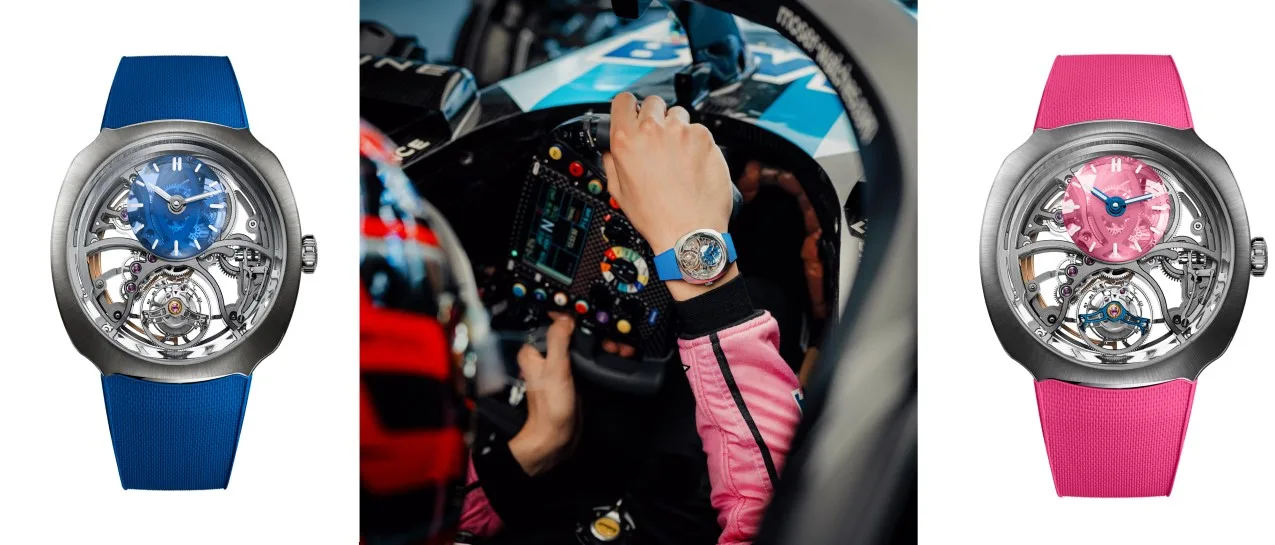



Show Comments +